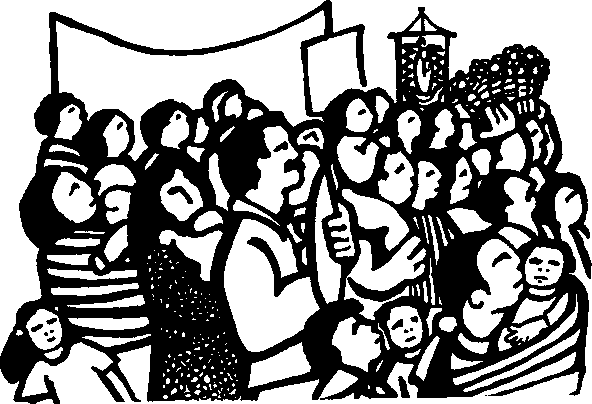Participants make cards illustrating
things they think they need and want to be healthy and happy.
Groups then sort these cards into "wants" and
"needs." The whole group discusses what it means
when people’s basic needs are not met and the relation
of basic human needs to human rights.
| Time: |
30-60
minutes |
| Materials: |
3"x5"
cards, old magazines, glue, scissors, art supplies |
| Setting: |
Preschool - Middle
school |
| Links: |
Fits well with Activity
1, Human Beings/Human Rights |
1. Ask participants, working in pairs
or small groups, to create 10-20 cards that illustrate the
things they think children need and want to be healthy and
happy. They may draw these things on the cards or cut out
and paste on pictures from magazines.
2. Each pair or group exchanges cards
with another. The group then sorts out the new cards into
categories:
- Which things are NEEDS (e.g., essentials
for survival, such as food, health care, shelter)?
- Which things are WANTS but not NEEDS
(e.g., desirable but not necessary for survival, such
as toys, education, or voting rights)?
- Which things are neither?
3. The groups who exchanged cards join
together and compare their cards. They then try to reach
agreement on categories for all the cards. When they have
done so, discuss:
- Which pile of cards is bigger? Why?
- If you had to move two cards from
the NEEDS pile to the WANTS pile, which two would you
choose? How would your life be affected by this change
(e.g., if something you feel you really need were no longer
available to you?).
4. Ask whole class to combine their
cards. Attach them to the wall or blackboard to complete
a class list. Discuss:
- Are all human needs included in the
NEEDS list? Are there other needs that should be added
to the list?
- Are all the wants included? Can the
class think of others?
5. Discuss:
- Is it easy to differentiate between
wants and needs?
- What happens to someone when his
or her wants are not fulfilled?
- What happens to someone when his
or her basic needs are not met?
- What happens to a community when
many people’s basic needs are not met?
- Are there people who don’t have
their basic needs met in the world? In the USA? In your
community? In your school?
- Are there some kinds of people who
often don’t get their basic needs met?
- Should these needs be met? Why?
- Should some people have their wants
satisfied when others don’t have their needs met?
- What can be done to meet people’s
basic needs?
- Whose responsibility is it to meet
people’s basic needs?
- What actions can you take to help
meet the basic needs of others in your community?
Going Further
1. Discuss:
Are there such things as basic human
needs common to everyone everywhere in the world?
- Are these needs always met?
- What influences our wants?
- How are wants influenced by age?
Gender? Class? Culture? Ethnicity?
- What is the relationship of human
needs to human rights? (See Activity 1, Human Beings/Human
Rights)
Adaptations
1. Follow up – Keep the
cards and reuse them in another subject area. For example,
apply the needs and wants categories to a mathematics, current
events, or a foreign language lesson.
2. For younger children –
Younger children may benefit from seeing concrete examples
of children in order to imagine what a specific child’s
wants and needs might be. Have children look through magazines
or pictures and choose a specific child to be an "imaginary
friend." Children could imagine characteristics of
this friend (e.g., name, age, toys, pleasures, etc.). Children
could cut out this picture, mount it on paper, and introduce
their new friend. This step might be done before Step 1
in the procedure section.
3. A Geography Activity –
If the class is learning about a different locality in geography,
they could explore needs and wants of people living in a
different environment, especially considering the effects
of climate, landscape, and rural or urban setting. They
might reconsider the cards they made: what pictures might
be changed? What categories?
4. A Literature Activity –
Have students make their piles based on the needs and wants
of characters in a short story or novel they are reading.
Source: Adapted from Margot Brown, Our
World, Our Rights, 23-26.

Equality is the result
of human organization
We were not born equal
-Hannah Arendt

